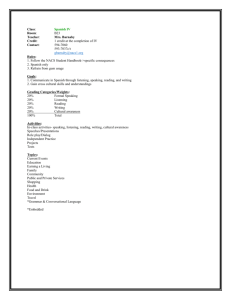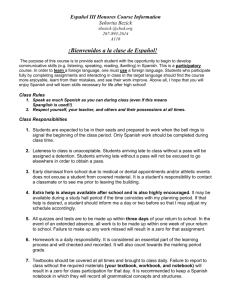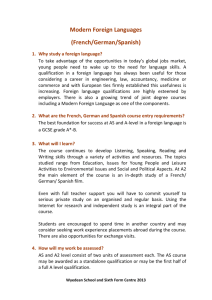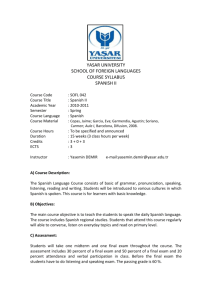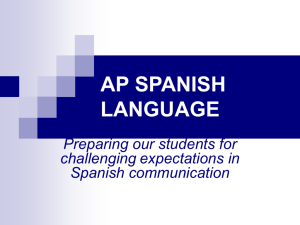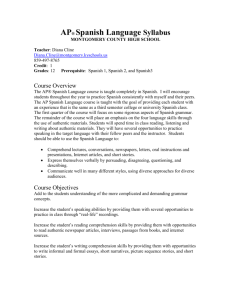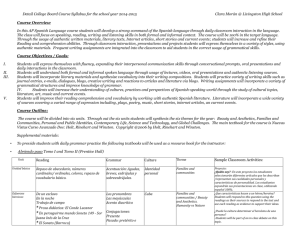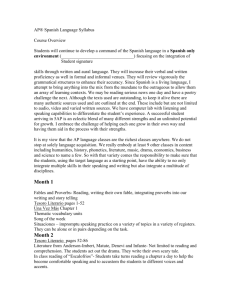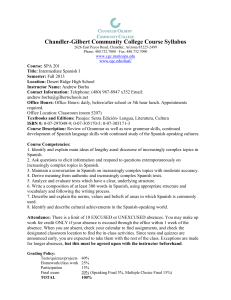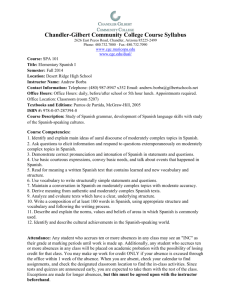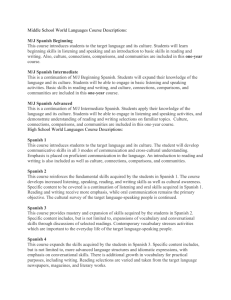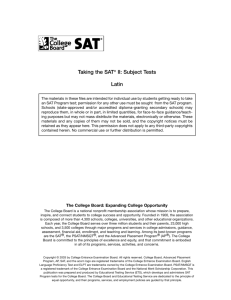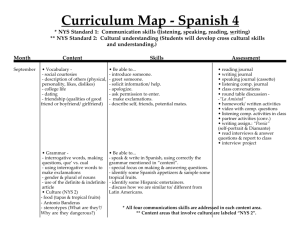1B Syllabus
advertisement
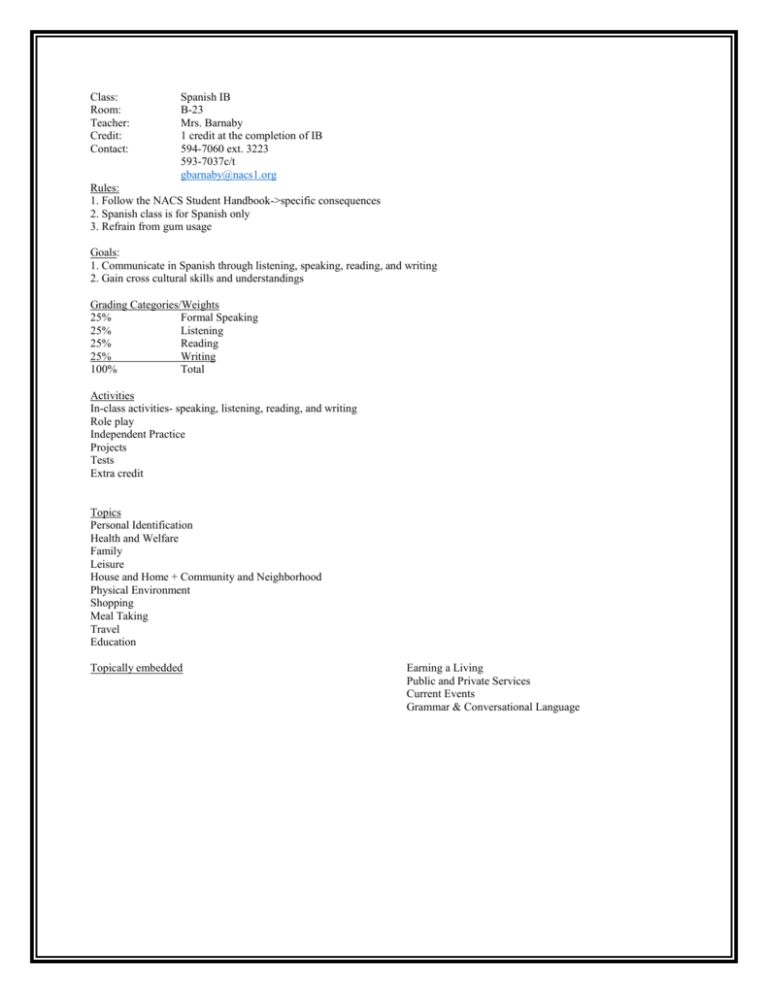
Class: Room: Teacher: Credit: Contact: Spanish IB B-23 Mrs. Barnaby 1 credit at the completion of IB 594-7060 ext. 3223 593-7037c/t gbarnaby@nacs1.org Rules: 1. Follow the NACS Student Handbook->specific consequences 2. Spanish class is for Spanish only 3. Refrain from gum usage Goals: 1. Communicate in Spanish through listening, speaking, reading, and writing 2. Gain cross cultural skills and understandings Grading Categories/Weights 25% Formal Speaking 25% Listening 25% Reading 25% Writing 100% Total Activities In-class activities- speaking, listening, reading, and writing Role play Independent Practice Projects Tests Extra credit Topics Personal Identification Health and Welfare Family Leisure House and Home + Community and Neighborhood Physical Environment Shopping Meal Taking Travel Education Topically embedded Earning a Living Public and Private Services Current Events Grammar & Conversational Language What do I have to be able to do in Spanish IB, exactly?? Note: All students must be able to communicate in Spanish for the purpose of socializing, providing and obtaining information, expressing feelings, and getting others to adopt a course of action in all ten major topic areas through listening, speaking, reading, and writing; and, demonstrate cross-cultural skills and understandings Listening: Comprehending auditory information with and without visual input and assessed with multiple choice questions Examples of listening activities: * comprehend messages and short conversations when listening to peers, familiar adults, and providers of public services either face-to-face or on the telephone/loudspeaker. * understand the main idea and some discrete information in television, radio, or live presentations * select vocabulary appropriate to a range of topics, employ simple and complex sentences in present, past, and future time frames, and express details and nuances by using appropriate modifiers Speaking: Initiating and sustaining a conversation for 4 exchanges Examples of speaking activities: * Interaction with providers of common *public services in face-to-face communications * Informal everyday conversations with individual peers and adults * Informal conversations with peers and familiar adults Reading: Comprehending reading material and assessed with multiple choice questions Examples of reading activities: *Information provided to the general public on forms, signs, billboards and posters, labels, programs, timetables, maps, plans, menus, etc. *Announcements, ads, and short reports of general interest in newspapers magazines, and other publications; short, informal notes Writing: Writing 50 word or more compositions in the present tense, markers for the past and future tenses, and with a variety of vocabulary Examples of writing activities: * Forms to be filled out for the use of common public services *Informal notes for communications in everyday life situations *Sales personnel, bank tellers, ticket agents, police, hotel personnel, etc.
